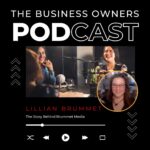In the world of agency recruitment, we train our consultants in the skill of ‘speed to market’. An essential ingredient for commercial success. The longer we take to fill a role or get back to the matching talent, the less likely we are of creating a successful outcome. At a forensic level we review any task that is slowing down the process and hindering outcomes. Thus, it is fair to say that it takes a certain type of person to thrive in those circumstances and delivery for all parties.

These are parts of the process that are in our control. What is outside of our control is the client (company) process and the candidate’s responsiveness. Given these ‘two sides of the fence’ and the attributing variables it is vital we streamline everything our end to ensure the hiring-process eventuates into a hire!
Adding to this we have seen a significant shift in tolerance levels towards a lengthy process. Its well documented as a society labelled as an instant gratification culture, that the attention span is decreasing. CVs are scanned for less than 6 seconds on average. Videos are watched for an average of 10 seconds on Facebook. Our behaviours are changing towards far more efficiency in process.
However, on the other hand, clients are adding more facets to their process to mitigate risk. Steps are taken to factor in ever evolving diversity and unconscious-bias tremors. The cost of a poor hire in Australia is between $25,490 to $127,542 per year. This equates to over $70 billion p/a in Australia alone. Therefore, they can be forgiven for adding extra contingency measures in place to protect the business.
However, it is clear to see that this over-protection from the wrong hire essentially is at the cost of the right hire, who will not wait out a lengthy process.
When giving feedback to clients who have missed out on the candidate they wanted due to timing, we advise the following.
Speed to market
Same as our consultants, speak to the candidates quickly. The first in leaves the longest impression. If your process is efficient too, any competitor interest will be too late. We recommend a quick 15-minute phone screen which is non-intrusive on their day to day lives.
Embrace technology
Video calls and panel questions are a great way for a parity-based screening tool. Moreover, there are a high suite of services that can interview, screen and assess for you. Being technology most people can deliver this quickly from wherever they are due to the accessibility of smart phones and laptops
Take references early
This stage has some flaws but is still considered an essential step. We recommend getting them straight away. At least obtaining the contact info. Often, they are hard to get hold of and just another delay that is preventable
Panel interview
If there are more than one stakeholder in the decision-making process, add them to the panel to merge stages. No more than 3 people though. Also, on the topic of interviews, focus on the candidates in batches. Often, we leave the first person interviewed hanging whilst we look at others that have just started the process. When returning to the one you wanted, they have accepted another role.
Talk the start date
This transparency helps the candidate visualise working for you and holds everyone accountable. Plus, if there are any curveballs such as leave required, it will extract that then.
24 hours feedback cadence
We always give our clients a 24-hour buffer after an interview for them to be decisive. Then we start to chase the feedback on the stage. If you set your systems and departments up for this same cadence it will prevent the process being bottlenecked in one department.
Ditch the cover letter and lengthy application process
Finally this is a common cause of drop out in the application stage. If the process is too clunky or lengthy, people just leave it. LinkedIn has ‘Easy Apply’ which is proving popular. The more you ask for upfront, the less likely you will see the application. Remember too that many people apply on their phone during a commute after a bad day in the office. If your application process includes sign ups, logins and document creation, it will not happen.
Our stance with the advice is a commercial one and agnostic across sectors. From outside-in we can see when it done right and when it is done wrong. Streamlining the hiring process with the above components will not only attract more talent but prevents you missing out on candidates that would otherwise have gone to your competitors.





















